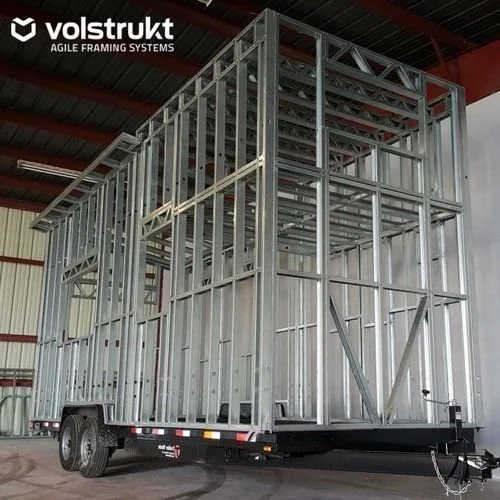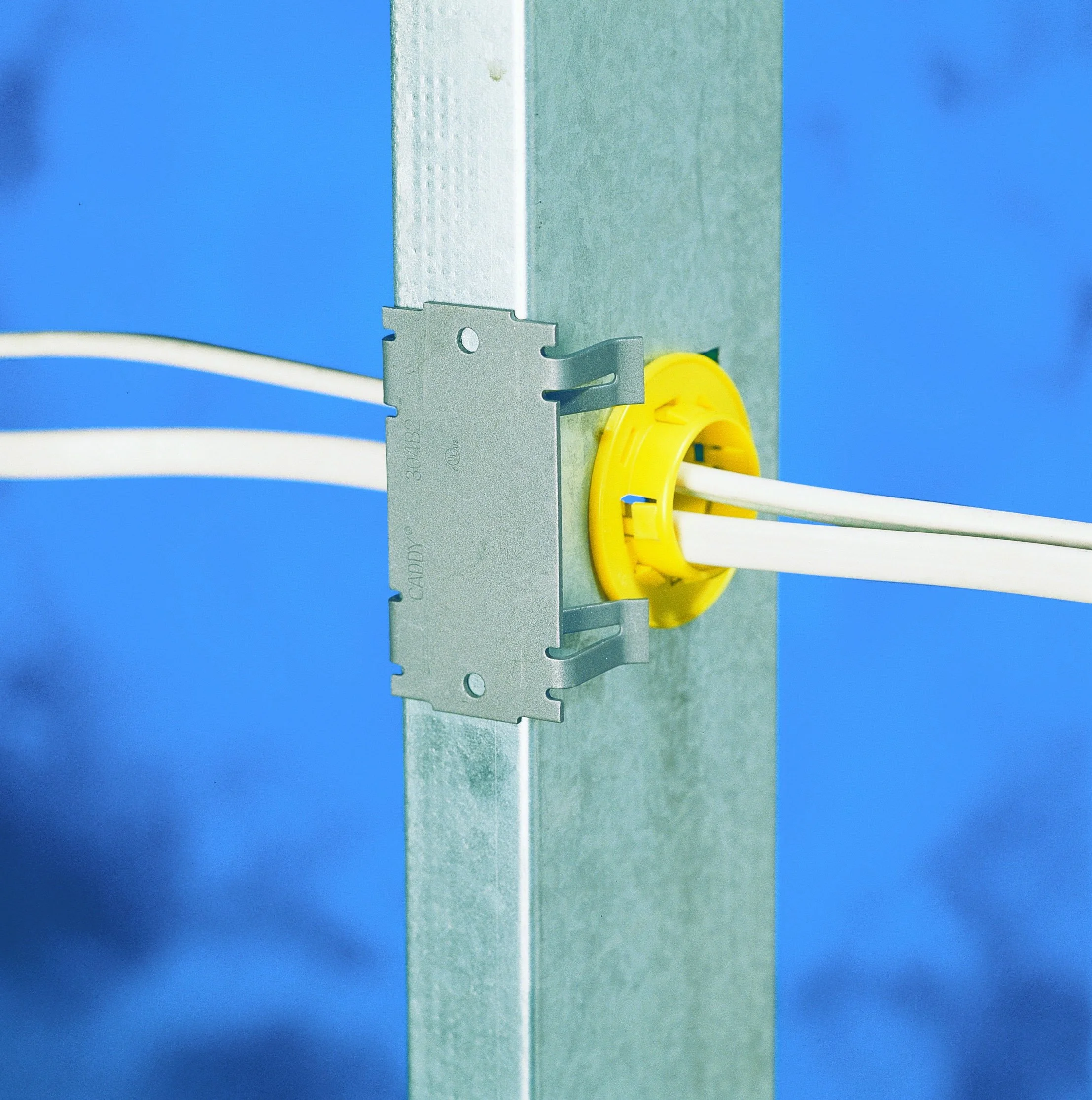TINY OFF-GRID HOUSE METAL FRAMING
Photo courtesy of Volstrukt
A lightweight structural steel framed Tiny Off-Grid House has the highest strength to weight ratio compared to traditional wood framing. A steel framed Tiny House is 40% to 60% lighter than a Tiny House framed with wood; yet, steel is 25 times stronger than wood and upwards of 60% recyclable. Also, the steel framing is resistant to mold, rotting, pest and fire.
The Volstrukt cold-rolled steel process is designed and engineered using a CAD design that cuts and bends the 20 - 22 gauge galvanized steel in to C sections to exact measurements. A thicker gauge steel would only add weight to the structure with no added benefit since the closed cell foam insulation will also contribute to the structural support. The biomemicry of the C sections provide light weight strength the way the hollow bones of birds provide strength without added weight. For more information on insulation & vapor barrier, please read: “Tiny Off-Grid House Insulation & Vapor Barrier”. The CAD manufacturing and steel frame assembly process increases efficiency and accuracy.
The cold-rolled steel forming production takes place directly by Voltrukt at their manufacturing site in Texas, USA, assuring quality control of each pre-assembled section.
A steel frame is built structurally straight and leveled because the steel frame can be cut to exact measurements. Wood can warp its shape due to the moisture content in the wood and how it acclimates to the humidity where it was stored.
The 20 - 22 gauge G-90 rated zinc coated with .90 oz/square foot total for both sides of galvanized steel (ASTM A525-91 BE1) is domestically sourced reducing its embedded carbon mileage footprint. The manufacturer of the steel framing, Volstrukt, states their “galvanized steel is fire and damp resistant and will not rust” under normal conditions “No mold, no termites, no VOC’s and no off-gassing.” Steel has immunity from many of the negative humidity factors that affect wood like warping and deformation; enough said.
Insulating The Steel Frame:
Steel conducts heat better than wood. To prevent thermal bridging, closed cell foam insulates the steel studs C-shape cavity creating a R-value of 7 per 1” thickness. But cavity insulation within a steel frame Tiny Off-Grid House is not enough to combat thermal bridging of the steel studs unless combined with an envelope of exterior ZIP 1” sheathing that creates an additional R-value of 3.6 and also provides a vapor barrier sealing the steel frame. According to Huber, their “ZIP System R-Sheathing may be used over light gauge metal framing without voiding the 30 year warranty.” Once cured, the rigid closed cell insulation adds to the structural integrity of the steel frame.
The roof joists will be spaced 16” on center and reinforced due to the load bearing weight of the solar array along the entire length of the shed roof and anticipated snow load. 16” on center roof joists should provide better structural stability for the solar array compared to 24” on center.
Every corner of the studs and joist will be reinforced with hurricane tie-downs or L brackets which strengthens the frame against strong winds or seismic conditions.
According to Volstrukt, their efficient CAD design and manufacturing process produces only 2% manufacturing waste; which are all 100% recyclable, compared to recycling only 20% of wood manufacturing waste that is recyclable but may or may not be reused.
Building with steel frame is more forgiving than building with Structural Insulated Panels (SIP’s). The pre-fabricated SIP panels are made of a rigid foam core that is sandwiched between two Oriented Strand Boards (OSB). Changes to the existing pre-fabricated panels or installation of pipes and wires maybe difficult. An insulated steel frame structure is much lighter than SIP; but equally strong.
Steel framing allows for alterations during and after construction. Convenient pre-punched service holes are made in the steel studs for protective plastic grommets to cover the sharp edges of the metal holes; allowing for the safe passage of electrical wires and plumbing.
Photo courtesy of nVent
Electrical:
2020 NEC Sections 300.4 (B) and 334.17; require protection for Romex wire when it is tunneled through holes in metal studs; or any other structure. The Romex conductors tunnel through plastic grommets which offers protection against the sharp edges of the perforated metal studs. These perforations are centered atleast 1 1/4” (32 mm) from the front edges of the studs; 2020 NEC Sections 300.4(D)
The perforations allows for current carrying conductors, not installed in raceways, to maintain adequate spacing without causing bundling which can impact the ampacity of the conductors, 2023 NEC 310.15 (C)(1), without compromising the structural integrity of the metal studs.
Please share your thoughts or experiences in the Comments section below.

